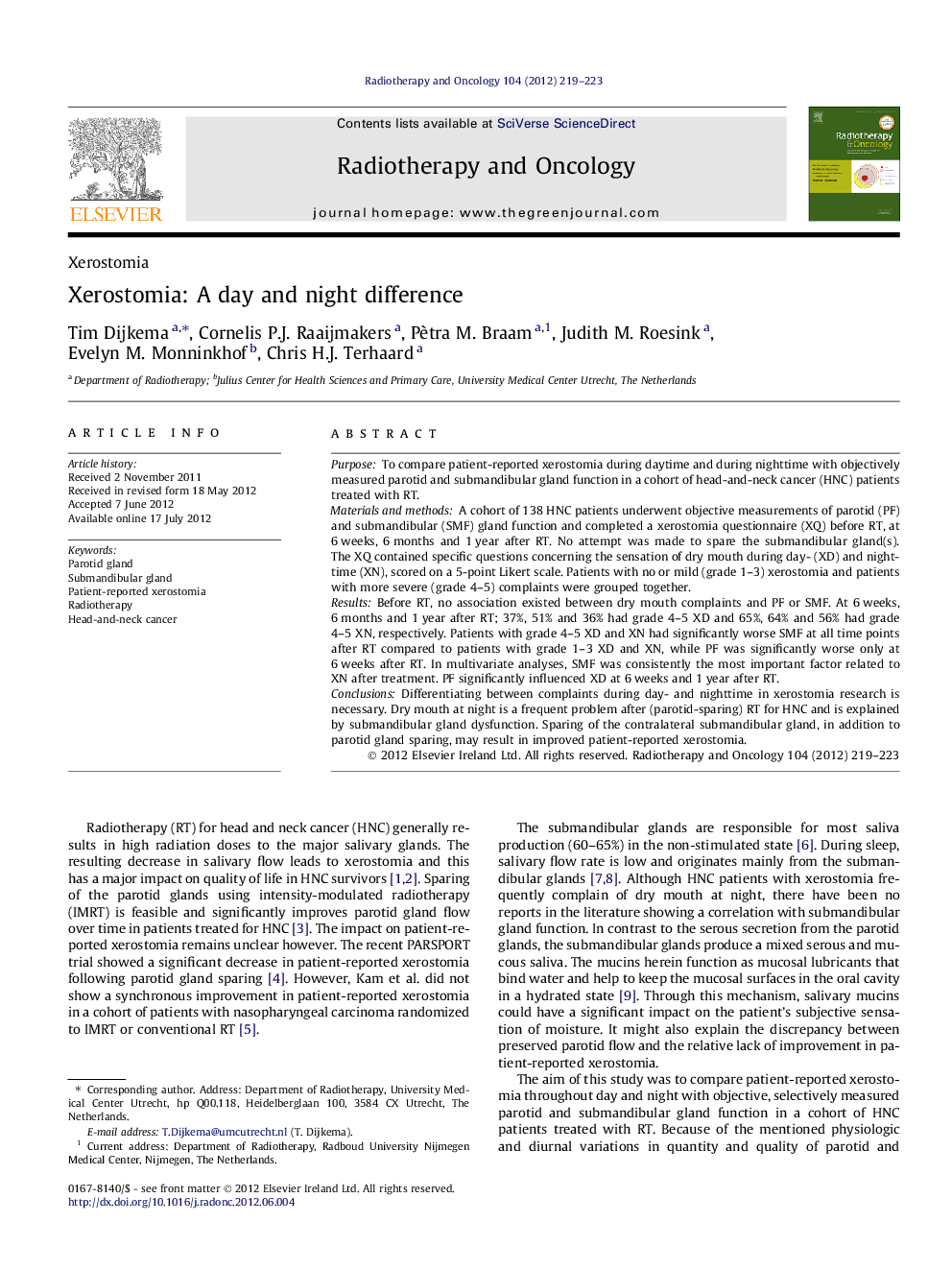| Article ID | Journal | Published Year | Pages | File Type |
|---|---|---|---|---|
| 2157796 | Radiotherapy and Oncology | 2012 | 5 Pages |
PurposeTo compare patient-reported xerostomia during daytime and during nighttime with objectively measured parotid and submandibular gland function in a cohort of head-and-neck cancer (HNC) patients treated with RT.Materials and methodsA cohort of 138 HNC patients underwent objective measurements of parotid (PF) and submandibular (SMF) gland function and completed a xerostomia questionnaire (XQ) before RT, at 6 weeks, 6 months and 1 year after RT. No attempt was made to spare the submandibular gland(s). The XQ contained specific questions concerning the sensation of dry mouth during day- (XD) and nighttime (XN), scored on a 5-point Likert scale. Patients with no or mild (grade 1–3) xerostomia and patients with more severe (grade 4–5) complaints were grouped together.ResultsBefore RT, no association existed between dry mouth complaints and PF or SMF. At 6 weeks, 6 months and 1 year after RT; 37%, 51% and 36% had grade 4–5 XD and 65%, 64% and 56% had grade 4–5 XN, respectively. Patients with grade 4–5 XD and XN had significantly worse SMF at all time points after RT compared to patients with grade 1–3 XD and XN, while PF was significantly worse only at 6 weeks after RT. In multivariate analyses, SMF was consistently the most important factor related to XN after treatment. PF significantly influenced XD at 6 weeks and 1 year after RT.ConclusionsDifferentiating between complaints during day- and nighttime in xerostomia research is necessary. Dry mouth at night is a frequent problem after (parotid-sparing) RT for HNC and is explained by submandibular gland dysfunction. Sparing of the contralateral submandibular gland, in addition to parotid gland sparing, may result in improved patient-reported xerostomia.
